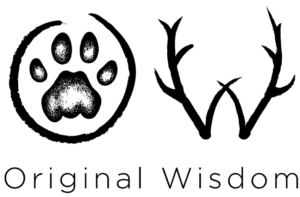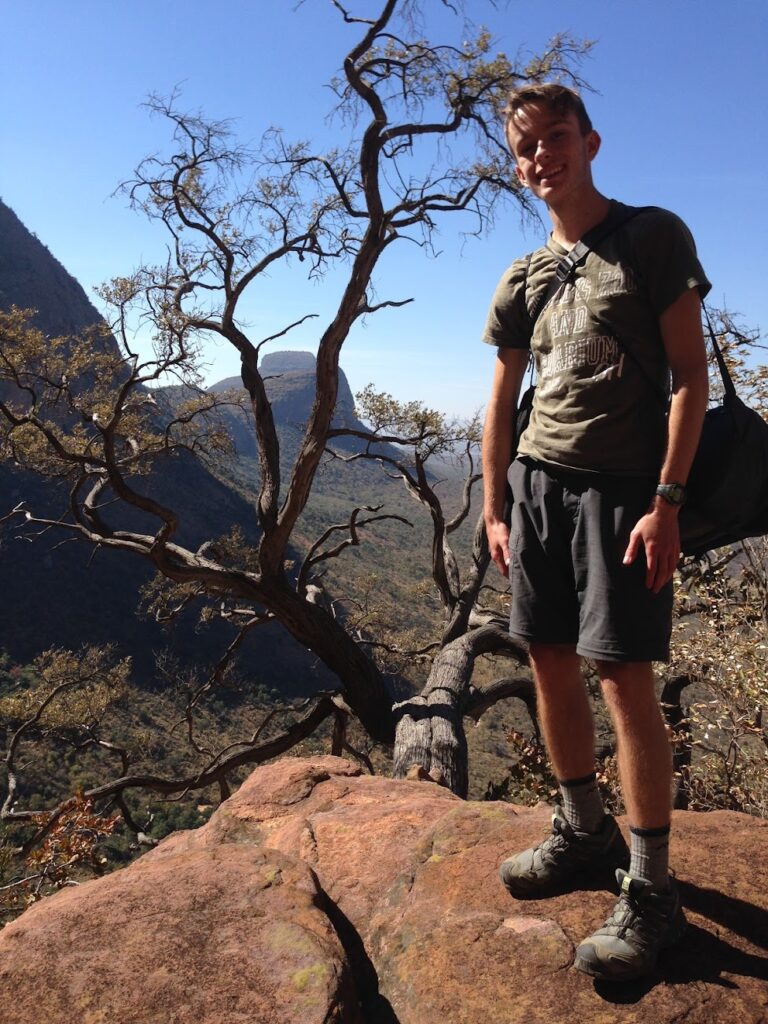To watch the 3 minute YouTube video that accompanies this story, scroll down to the link at the bottom.
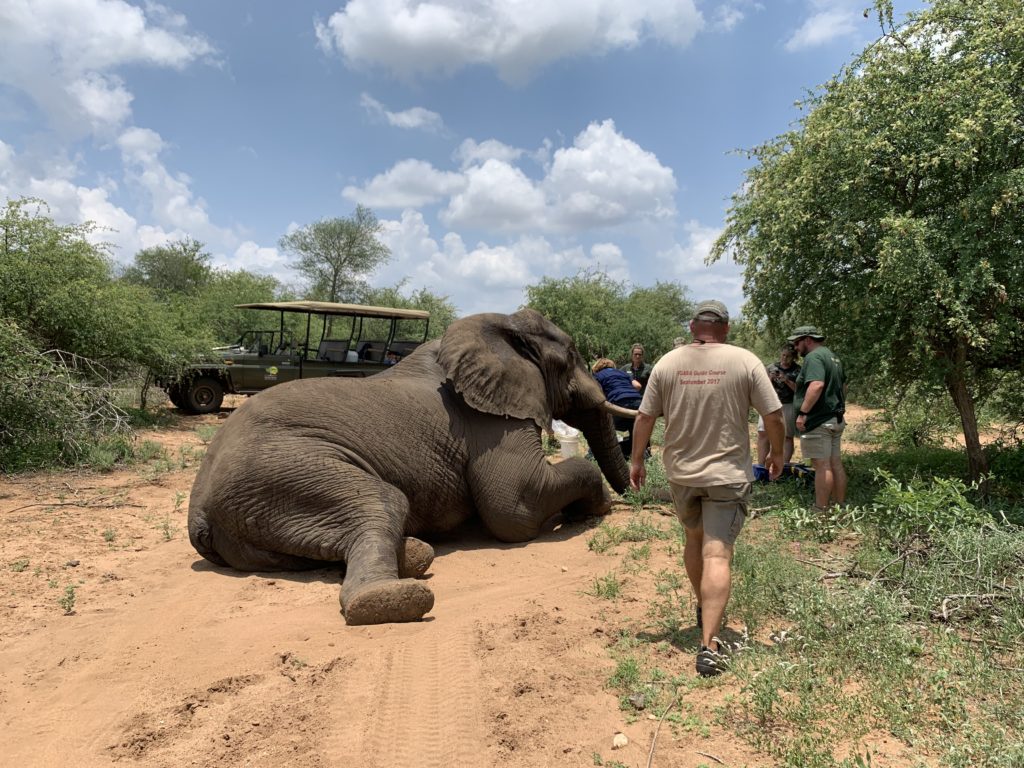
We pulled in to Dundee Dam with our students, FGASA Level 1 guide trainees from all over the world, to view a hippo cow and calf that were in thewater. Across the dam wall, we saw a big elephant bull, so we drove the game viewers closer to get a better look at him. He was a dark red-brown in color,the color of the mud from that particular dam. We watched him splash around inone of the muddy puddles on the outskirts of the dam, kicking up the mud withhis feet and them throwing muddy water across his back and chest with his trunk.
“His right front foot is swollen.” This came from our headguide and principle trainer, Lee Gutteridge, a legend in the industry.
We looked, and sure enough, his right front foot was bigger than his left, and appeared to have an abscess on the heel. He held it aloft much of the time.
We watched him lumber out of the mud puddle and walk, barely limping, to a sandy area, where, holding up his right front foot, he used his trunk to gather fine sand and splash that over his back and across his belly –a mud wash followed by a dust bath. Animals are so resilient. I imagined that the mud probably felt good to his sore foot and hot body, in the 40-45 degree (Celsius) heat that we’d been having.
He was absolutely chilled with our vehicles and our voices, paying us no attention. I wondered aloud where he had come from, that he was so chilled with people and vehicles? We never know what we are going to see in ourarea of the Greater Kruger ecosystem, because the animals are free to roam over the entire park, and some elephants come from far away. Our region is called “ruggedveld” and it’s harsh. There is life, everywhere, if you know where to look, and our camp, Ngala Training Camp, is on the banks of the ever-flowing Olifants River, which pulls in animals from afar for water and succulent vegetation. But, some days we don’t see elephants. Other days, we see big breeding herds being followed by musth bulls. That’s the beauty of an open ecosystem, you never know what you are going to get. And the animals can be skittish, some coming from areas deep in the bush where they might never, or hardly ever, have seen people and vehicles before. This big guy was a huge gentleman of the bush, completely relaxed with us.
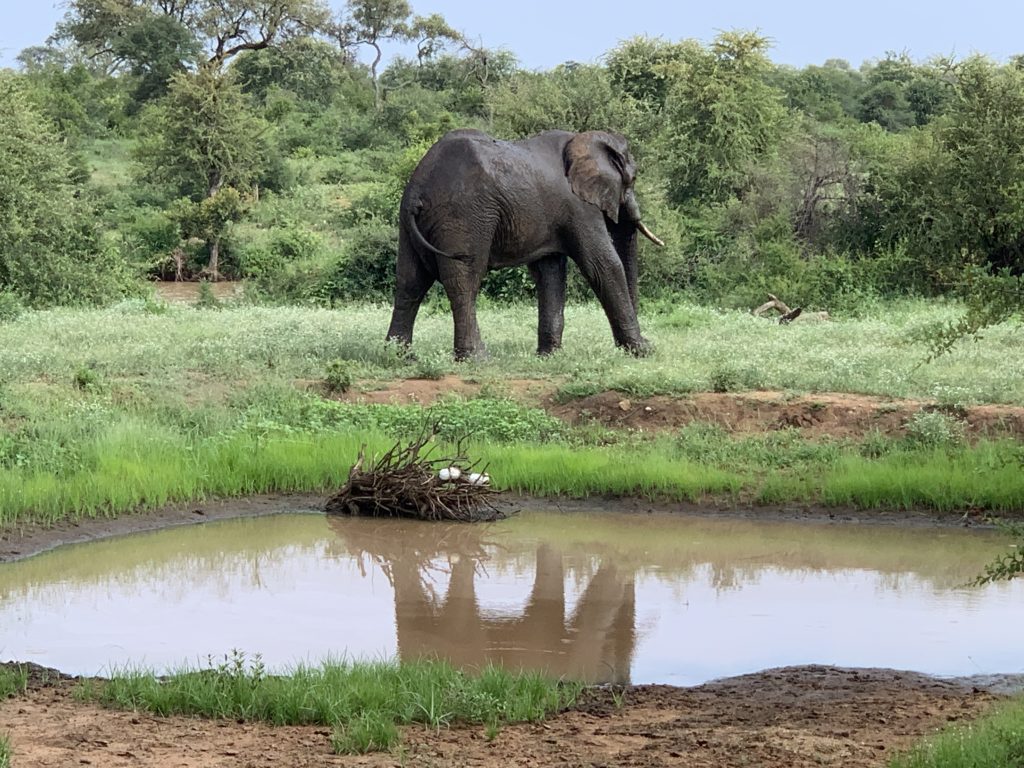
We took some photos, videos, talked a bit about elephants, hippos, some of the birds down by the water, and made our exit. Later, we told the warden about the elephant. The next evening, we saw the elephant again, and messaged the warden, who came to see. After taking his own photos and videos, he reported that the elephant might have a snare around his heel. Maybe this big bull had caught his heel in a snare meant for bush meat, or even a rhino poacher’s snare? We don’t know.
Plans were formulated that we’d locate the elephant very early the next morning, tracking him by foot and by vehicle and staying with him until the vet could arrive.
We awoke at 4 am and were on the road by 5 am to locate him. Two vehicles full of new guide trainees, and a few trackers – the sunrise was glorious! We started where he had been seen last. He wasn’t there. So we began slowly driving the roads surrounding the area to see if we could find histracks crossing a road where he exited. We stopped at every big elephant track to check the age. Most were old. We found one from the previous evening, with some diurnal species on top from before the sun had gone down. We also saw the tracks of a huge male leopard, big enough to be mistaken for a small lioness, walking down the road, all by himself. So, our elephant was still in the block beside the dam, but it’s a big block, and where, exactly, was he?
Lee walked in on the freshest trail from where the bull had exited the dam the night before, and soon radioed that he thought that they were old. He kept walking, in a large zig-zag pattern, until he found big elephant tracks, fresh ones, and fresh dung that was still warm, and fresh feeding sign. The elephant was feeding from termite mound to termite mound, where the grasses and vegetation is most nutritious. Lee had to circle around each feeding area and find the trail again each time, where the bull exited and headed towards more food.
Finally, Lee saw a big bull elephant, close-by, feeding. He radioed that he was going to get in close to make sure it was the correct elephant – with the swollen right front foot. He snuck in, using the wind and the vegetation as cover. Sometimes, he was so preoccupied with watching the right front foot in the long grasses that he forgot to stop and hide when the elephant turned his head in Lee’s direction. But, the bull went on feeding, and did not notice his tracker.
Lee followed the bull slowly through the bush, at a safe distance, back to the road, where we picked him up with the game viewer. We slowly followed the bull back to the dam, where he continued to eat for a little while along the banks, had a good mud bath and a rub against a big tree,and then walked straight into the dam and proceeded to sit, with just the top of his head and back and the tip of his trunk above the water. Occasionally, he would submerge his whole head, looking like a giant hippo in the water.
One of the benefits of being on a reserve without a lot of lodges is that we can sit with animals for hours, and don’t have to leave to allow dozens of other game viewers in for their 10-minute sightings. We monitored the bull while we waited for the vet, hoping that he would arrive soon, before the heat of the day set in. If the elephant couldn’t cool himself while he was sedated, or we couldn’t keep him cool enough, then he might overheat and die. But, he also could not be sedated while he was still in the water!
He stayed in the dam for hours as the clock ticked, and we watched, and waited for the vet – ready to follow him again on foot if he wandered off into the bush. Eventually, the bull lumbered out of the dam and began feeding again along the shore, walking onto more solid land just before the vet arrived.
The darting and sedation went quickly, as we watched and waited from our vehicles on the dam wall. Then, as the giant bull fell down, we were called in to help. The vet instructed us to help lift his leg, and when that angle wasn’t right, we had to all heave and push him over fully on his side. Some of our students got knocked over as his feet sprang out beside his body. The vet put a small twig into his trunk to keep his airway open, and the bull made the most beautiful elephant snoring noises. They flipped his big ear over so that all the veins were prominent, and we took turns pouring cool water along them to keep his body temperature down.
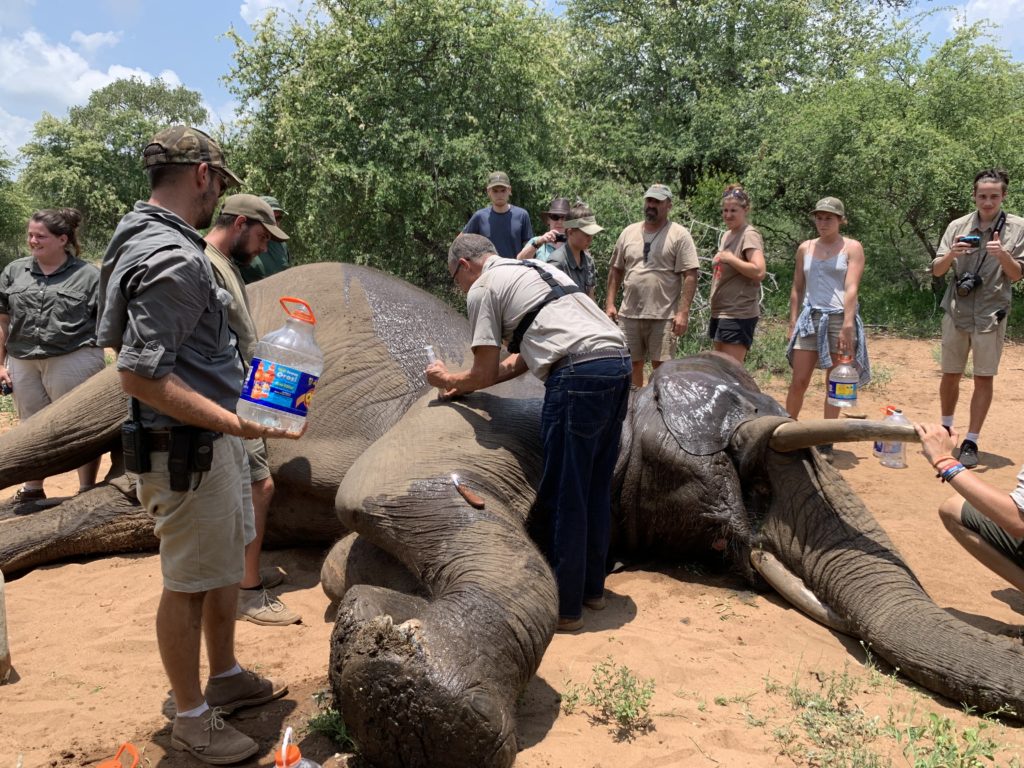
The vet and his assistant dug into the foot, removing infected flesh. Down, and down they dug, but never finding a snare. It was evident that there had been one, and the foot was badly infected, but the snare was no longer there. They cleaned the foot properly and gave him massive injections of a long-term antibiotic and anti-inflammatory, and then administered the reversal agent that would wake him up. We ran for our vehicles.
The gentle giant arose, disconcerted, and with a sore foot, no doubt, and ran away into the bush. We debriefed with the vet, who said that the elephant now had a better chance of a full recovery, but that nature must take its course.
We were incredibly lucky to be able to help this animal. It doesn’t always happen. The Kruger Park management protocol only allows humans to interfere where humans have caused the original problem – in this case, a snare. And, not all of our guide trainees get to experience something like this. It’s rare, thankfully, and darting experiences charge students and tourists thousands of dollars to participate in similar experiences. We got to track him, sit with him, and participate in what will hopefully be a healing process for him.
Word has gone out to watch for him, and that the scarring on his foot is only scarring now, with no snare. We hope that he does not become shy of people and vehicles from this, and that we see him again. Thanks to Lee Gutteridge and the team at Nature Guide Training, to veterinarian Pete Rodgers and his team at Provet, and to Frikkie and Natasha Kotze of OREC and Struwig Eco Reserve. It takes a village to treat an elephant!
#natureguidetraining #trackingisoriginalwisdom #cybertracker, #alwaystracking
Download our recommendedreading list for trackers by signing up for our “News for Trackers” newsletter!
Ourgoal is NOT to be spammy with our newsletter. We’d just like to send occasionalupdates on upcoming programs and maybe some cool info on wildlife, people, andtracking!
Oncethe sign-up form has been submitted, you will be re-directed to the downloadpage.
Downloadour recommended tracking book list (and some other resources). It’s specific toSouthern Africa and North America, but, a good tracking book is helpful in anyregion as a starting point to learn how to look at track morphology andanimal behavior.
[contact-form-7 id=”2892″ title=”Subscribe tothe newsletter”]